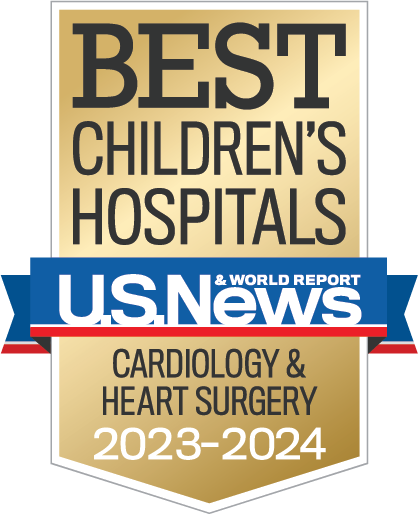- Doctors & Departments
-
Conditions & Advice
- Overview
- Conditions and Symptoms
- Symptom Checker
- Parent Resources
- The Connection Journey
- Calm A Crying Baby
- Sports Articles
- Dosage Tables
- Baby Guide
-
Your Visit
- Overview
- Prepare for Your Visit
- Your Overnight Stay
- Send a Cheer Card
- Family and Patient Resources
- Patient Cost Estimate
- Insurance and Financial Resources
- Online Bill Pay
- Medical Records
- Policies and Procedures
- We Ask Because We Care
Click to find the locations nearest youFind locations by region
See all locations -
Community
- Overview
- Addressing the Youth Mental Health Crisis
- Calendar of Events
- Child Health Advocacy
- Community Health
- Community Partners
- Corporate Relations
- Global Health
- Patient Advocacy
- Patient Stories
- Pediatric Affiliations
- Support Children’s Colorado
- Specialty Outreach Clinics
Your Support Matters
Upcoming Events
Colorado Hospitals Substance Exposed Newborn Quality Improvement Collaborative CHoSEN Conference (Hybrid)
Monday, April 29, 2024The CHoSEN Collaborative is an effort to increase consistency in...
-
Research & Innovation
- Overview
- Pediatric Clinical Trials
- Q: Pediatric Health Advances
- Discoveries and Milestones
- Training and Internships
- Academic Affiliation
- Investigator Resources
- Funding Opportunities
- Center For Innovation
- Support Our Research
- Research Areas

It starts with a Q:
For the latest cutting-edge research, innovative collaborations and remarkable discoveries in child health, read stories from across all our areas of study in Q: Advances and Answers in Pediatric Health.


Marfan Syndrome Clinic
Marfan Syndrome
We treat kids like they should be treated: like kids. That’s why we designed our hospital just for them.

About Marfan syndrome in children
Marfan syndrome is a genetic disorder that affects the connective tissues that form parts of the lungs, eyes, skin, skeletal system and cardiovascular system. Children with Marfan syndrome are born with a disease-causing, or “pathogenic” change in the gene Fibrillin-1 (FBN1).
Because Marfan syndrome is genetic, the only way to develop the condition is to be born with the gene that causes the disease. Sometimes children inherit this disease-causing gene from one of their parents and sometimes it is new in the child with no history of the gene in other family members.
How does Marfan syndrome affect the heart in children?
Marfan syndrome in children may affect major blood vessels, weakening the wall of the aorta, which is the main blood vessel that carries blood away from the heart to the rest of the body. If left untreated, the aorta can become larger and if it reaches a critical size, it becomes an “aneurysm,” which means it is large enough to cause a tear in the wall of the blood vessel. A tear is called a dissection and can be life-threatening.
In some cases, children with Marfan syndrome have an abnormality in one of the valves inside the heart called the mitral valve. Some individuals have a more “floppy” mitral valve which is called mitral valve prolapse, which can lead to mitral valve leakage and ultimately left heart dysfunction, if left untreated.
Who gets pediatric Marfan syndrome?
About 75% of cases of Marfan syndrome in children happen with a family history of the disease in one of their parents. In some cases, a parent may not even know that they have the condition.
The remaining 25% of children with Marfan syndrome have no family history. This is called “de novo,” meaning that the gene is brand new in that child.
Neither family-related Marfan syndrome nor spontaneous Marfan syndrome is preventable, but the symptoms of Marfan syndrome are very treatable.
Marfan syndrome is often diagnosed early in life, especially when there is a family history. When there is no family history, the condition can be diagnosed in infants, young children and even teenagers. How the condition presents itself and its severity can be different for everyone.
What are some Marfan syndrome symptoms?
There can be many Marfan syndrome signs and symptoms because the condition affects many different types of tissue within the body. The most noticeable sign is abnormal body proportions. Children with Marfan syndrome can have noticeably longer arms, legs, fingers and toes.
Other Marfan syndrome signs to look for are:
- Scoliosis (a curve of the spine to one side of the body)
- Crowded teeth and a small, very high, arched roof of the mouth
- Flat feet without a typical arch
- Pectus Carinatum (a chest that sticks out) or pectus excavatum (a chest that caves in at the center)
- Eye conditions such as nearsightedness and lens dislocation
- Pneumothorax (collapsed lung)
How do doctors diagnose Marfan syndrome?
If your child's doctor suspects Marfan syndrome might be causing some of your child's medical conditions, they will likely order more tests to be sure. Fibrillin-1 genetic testing can tell the doctor if your child has the gene change that causes Marfan syndrome 95% of the time.
There are conditions similar to Marfan syndrome with important differences. Genetic testing is vital to ensure the correct diagnosis and to create the best care plan. Our cardiology team uniquely integrates genetic counseling and clinical genetics services. We also offer exome and genome sequencing for challenging diagnostic cases and provide precision medicine programs.
Your child's cardiologist will perform an echocardiogram (ECHO) to examine the structure and function of the heart and the heart valves. This test also gives the doctor information about the size of your child's aorta, the artery that carries oxygen-rich blood from the heart to the rest of the body.
Marfan syndrome treatment at Children's Hospital Colorado
While there is no cure for Marfan syndrome, it is possible to treat nearly all related symptoms. With modern treatments, the life expectancy for people with Marfan syndrome is near normal and most children with the condition live healthy lives.
Marfan syndrome treatments for all of your child's symptoms
At Children's Colorado, our specialty doctors will help your child manage their symptoms. Our ophthalmologists can treat any eye complications your child may develop due to Marfan syndrome. Our Orthopedics Institute can help your child with skeletal complications, such as scoliosis, a curvature of the spine.
At our Heart Institute, we can monitor and treat any weakening of the aorta, the most significant issue that affects children with Marfan syndrome. Our cardiologists use medication to decrease the stress placed on the aorta. In some cases, our cardiothoracic surgeons may recommend surgery to replace a significantly weakened aorta. Our surgical staff also repairs leaky heart valves associated with the condition. With a high-volume aortopathy program offering full-service, multidisciplinary genetics and cardiology care, we can ensure that patients receive expert care for other needs.
Learn more about our Marfan Syndrome and Aortopathy Clinic for the treatment of this condition.
- The National Marfan Foundation works to help save and improve the lives of those with Marfan syndrome through research grant programs advocating for government-funded research and sharing knowledge about Marfan syndrome and related conditions through conferences, symposia and partnerships with governmental agencies and other health organizations.
- The American Heart Association fights heart disease and stroke through funding research, sharing knowledge and advocating for those battling heart disease and their families.
Next steps
-
Would you like to learn more about us?
Learn more about the Marfan Syndrome Clinic -
Do you have questions about your child’s condition?
720-777-6820 -
Are you ready to schedule an appointment?
Schedule an appointment
Get to know our pediatric experts.

Stacy Anderson, CPNP-PC
Certified Pediatric Nurse Practitioner
Patient ratings and reviews are not available Why?

Jennifer Romanowicz, MD
Cardiology - Pediatric, Pediatrics

Dunbar Ivy, MD
Cardiology - Pediatric



 720-777-0123
720-777-0123




